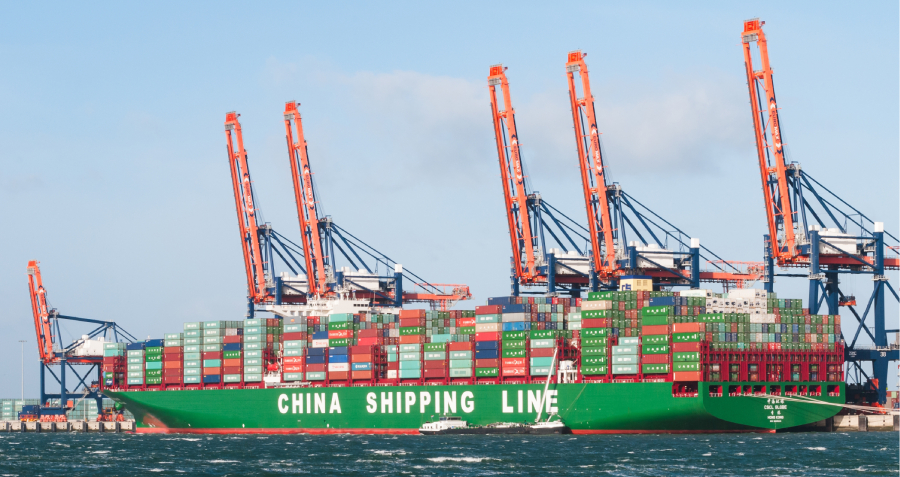As artificial intelligence drives an unprecedented surge in global energy demand, with data centers projected to consume as much electricity as Japan by 2026, the world faces a critical challenge: how to ensure reliable, clean power for our increasingly energy-hungry future. For Dr. Hong Chen, professor at Cheung Kong Graduate School of Business and an expert in clean energy markets, the answer may lie in a technology that was once dismissed as impractical – hydrogen storage.
“The bottleneck for renewable energy isn’t generation anymore – it’s storage and transport,” explains Chen. While solar and wind power have become the cheapest forms of electricity generation in many parts of the world, their intermittent nature poses a fundamental challenge. The sun doesn’t always shine, the wind doesn’t always blow, and the places where renewable energy is most abundant often lie far from where it’s most needed.
Current solutions fall woefully short. Battery storage, despite significant advances, can only handle a tiny fraction of grid-level energy needs. The fundamental challenge is that energy supply must match demand both in time and space. The time dimension requires storage, while the spatial dimension requires transport. While the power grid currently dominates electricity transmission and distribution, batteries prove impractical for energy transport due to their low energy-to-weight density. According to Chen, a 2020 report by the US Department of Energy shows that even by 2030, total global energy storage capacity based on existing technology will amount to less than 0.1% of renewable electricity generation. For a world increasingly dependent on clean energy, this gap between generation and storage represents an existential threat to the renewable transition.
This storage challenge helps explain what Chen identifies as a puzzling market phenomenon: why clean energy stocks have significantly underperformed despite solar and wind being the lowest-cost sources of electricity generation. “If you can supply a product cheaply enough and there’s huge demand, the company should be doing well,” Chen notes. “But what’s really happening is that because solar and wind power generation isn’t controllable – no electricity at night or on cloudy days – and because the electricity grid cannot efficiently transport or store this intermittent power, these companies cannot fully deploy their potential.”
Chen points to China as an example, where more than 90% of solar panels are produced, yet deployment is constrained by grid limitations and storage challenges. Without effective storage and transport solutions, even the cheapest renewable energy remains stranded, limiting the financial potential of these companies.
The mismatch between renewable energy generation and consumption poses particular challenges in China. Chen’s research shows that even though China has expanded its renewable capacity, its CO2 emissions from electricity generation remain stubbornly high, producing some 580 grams of carbon dioxide per kilowatt-hour – significantly higher than many developed economies. This seemingly paradoxical situation also arises from the geographic disconnect between the supply of renewable resources and energy demand. Most of China’s solar and wind potential lies in the sparsely populated northwest, while energy demand is concentrated in the industrialized southeast. Without effective storage and transport solutions, China must maintain coal-fired power plants as backup, undermining the country’s decarbonization efforts. This geographical mis-match is a global issue and not limited to China alone.
“Without effective storage and transport solutions, even the cheapest renewable energy remains stranded, limiting the financial potential of these companies.”
An Overlooked Solution
Chen believes a solution exists in the form of an overlooked technology called Liquid Organic Hydrogen Carriers (LOHC). The concept is deceptively simple: hydrogen, produced using renewable electricity, is chemically bound to an oil-like carrier substance at ambient temperatures and pressures. This “hydrogen oil” can then be safely transported using existing infrastructure and released when needed, whether for electricity generation, industrial processes, or transportation.
“Think of it as a chemical battery,” Chen notes. “But unlike conventional batteries, it can store massive amounts of energy at grid scale, and you can move it anywhere using regular tanker trucks and pipelines.”
The technology addresses two of the “four miracles” or grand challenges of the hydrogen economy famously outlined by former U.S. Energy Secretary Steven Chu when the Obama administration abandoned hydrogen research in favor of battery technology. These included hydrogen generation, storage, utilization, and infrastructure.
The promise and pitfalls of hydrogen energy have a complex history. In 2003, President George W. Bush made hydrogen-powered vehicles a centerpiece of his energy policy, declaring that “the first car driven by a child born today could be powered by hydrogen.” But by 2009, President Obama drastically scaled back hydrogen research, arguing that the technology needed the above-mentioned “four miracles” to succeed.
The challenges extend beyond simple geography. As Chen points out, even when comparing electric vehicles in China with efficient hybrid gasoline cars, the overall carbon footprint can be surprisingly similar due to the coal-heavy electricity mix powering those EVs. “We’re often just moving the pollution from cities to other regions,” Chen notes. This underscores why transformative storage technologies such as LOHC are crucial – they could enable renewable energy to truly replace fossil fuels rather than merely supplementing them.
While electric vehicles have made impressive inroads in passenger transportation, Chen argues that batteries alone cannot solve the world’s broader energy storage challenges. “For data centers, heavy transport, and grid-level storage, we need solutions that can handle much larger scales of energy,” he notes. LOHC technology offers distinct advantages over batteries in these applications. Unlike batteries, which are heavy and limited in capacity, LOHC can store energy at much higher densities and be transported using existing infrastructure.
Chen sees LOHC as complementary to battery technology rather than competitive. “We shouldn’t target competing with EVs for small cars,” he notes. “The real opportunity is in areas where batteries are impractical – long-haul shipping, steel manufacturing, and grid-scale energy storage.” This focuse on different market segments allows both technologies to play to their strengths.
Commercial Momentum Builds
The technology’s potential is increasingly being recognized by major industrial players. In a significant move, Japanese oil company Eneos Holdings in February announced plans to develop what will be the world’s first commercial-scale LOHC project using Honeywell’s technology. This implementation addresses one of the fundamental challenges in the hydrogen economy – long-distance transportation. Honeywell’s solution chemically combines hydrogen gas with toluene (a solvent that is used in several products ranging from adhesives to paints) to create methylcyclohexane (MCH), a liquid carrier that’s compatible with existing infrastructure. This allows hydrogen to be exported to Japan in liquid form and then recovered at its destination, with the carrier material recycled for future use.
The German government is also making a substantial bet on LOHC technology. In August, the federal government, along with the state of Bavaria, awarded €72.5 million ($75.2 million) to Hydrogenious LOHC Technologies for their Green Hydrogen @ Blue Danube project. The initiative aims to supply up to 1,800 tons of green hydrogen annually to customers in the Bavarian Danube region by 2028, using a technology that binds hydrogen to benzyltoluene, a thermal oil that can be safely transported under ambient conditions.
What makes these commercial developments particularly significant is their ability to leverage existing infrastructure. As Ken West, president of Honeywell Energy and Sustainability Solutions, notes in a media statement, “With more cost-effective long-distance transport, our Liquid Organic Hydrogen Carrier provides a method of more closely matching international supply and demand for hydrogen.” This compatibility with existing liquid fuel infrastructure could dramatically reduce the costs and timeline for building out a hydrogen economy.
The German project demonstrates this potential at scale. Using conventional tanker trucks, rail, and inland waterway vessels, large quantities of green hydrogen can be transported safely throughout Central Europe. The flexibility of LOHC technology allows for the connection of diverse hydrogen producers with industrial off-takers, avoiding one-sided dependencies and increasing energy system resilience. For example, the Green Hydrogen @ Blue Danube project will source hydrogen from both Bavaria and North Rhine-Westphalia, creating a distributed supply network that can be integrated with future hydrogen pipeline infrastructure.
These developments validate Chen’s assessment of LOHC’s transformative potential. As Robert Habeck — Germany’s economy minister, who was chosen in November to represent the Greens in the race to become the country’s next chancellor in 2025 — noted at the Hydrogenious funding announcement, this technology represents “a truly pioneering project” that will “make an important contribution to the development of the hydrogen economy and thus have a significant impact on the transformation of the industry.”
It is because of such developments that Chen’s assessment of LOHC technology reflects both optimism and urgency. He sees the technology as “the best solution for the world” to solve its energy storage and transport challenges. When Chen recently presented LOHC technology developed by Dr. Hansong Cheng – a Princeton-trained chemist who spent 19 years at Air Products and was a founding member of the U.S. Department of Energy’s Hydrogen Sorption Center of Excellence – to former Energy Secretary Chu – who once deemed hydrogen storage an impossibility without divine intervention – Chu’s response was telling: “It’s too good to be true.” (Cheng’s expertise in hydrogen storage technologies spans decades, including his pioneering work on LOHC development since the early 2000s as a leading researcher and now as founder of Hynertech, making his innovations significant in advancing practical hydrogen storage solutions.) But rather than skepticism, Chu’s comment reflected amazement at how far the technology has come.
The urgency of developing better energy storage solutions is particularly acute all around the world. Chen argues that LOHC technology could be especially transformative in enabling countries to finally bridge the gap between abundant renewable resources and energy-hungry regions. “This is about more than just storage,” Chen notes. “It’s about creating a flexible energy transport network that can adapt to seasonal and geographic variations in supply and demand.”
As Chen argues, the world can no longer afford to wait for perfect solutions while climate challenges mount and energy demands soar. With LOHC technology now proving itself at commercial scale, the key question isn’t whether it works, but how quickly it can be deployed to help renewable energy fulfill its promise of powering the planet’s sustainable future.




















